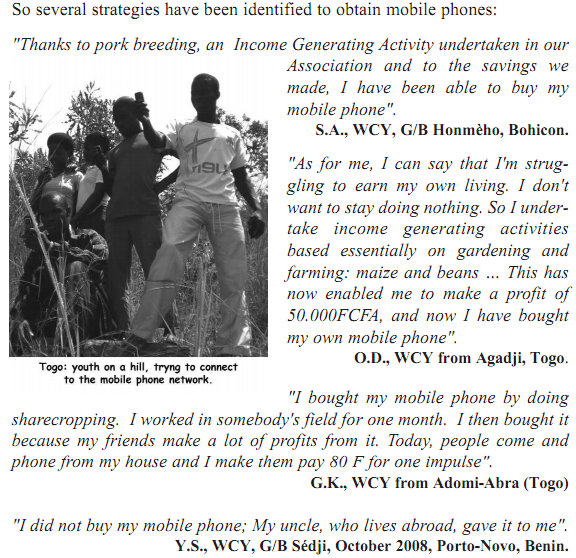Increasingly Information and Communication Technologies (ICTs) are becoming recognized as critical components of international development programs. Yet at times the USAID Missions lack staff resources that can sort through the current in-country situation and local opportunities, and assess how ICTs can be embedded for maximum benefit within their development portfolios.
One of the common ICT-related services provided by EGAT’s ICT Team has been support to the Missions through a one or two week ICT Assessment. These are typically undertake by a small team of two ICT professionals either from the ICT Team itself and/or made available through existing PASA or contractor resources. Ideally this small team is supported by Mission Staff to ensure efficient and effective use of their time on-the-ground.
These ICT Assessments vary in scope depending on the requirements of the Mission. The focus of these Assessments is to assist the Mission program staff to first gain a better understanding of the current in-country status, including; what other donors are doing in this arena, what the government is doing or planning to do, what the private sector is doing and possibly inhibitors they are experiencing, how the education is meeting the ICT challenges, etc. Then upon gaining these insights, the Assessment Team then works with Mission Program personnel to determine if there are rich opportunities for possibly expanding or imbedding ICT-related elements within the program and projects. Typically these ICT Assessments are carried out at two levels:
Countrywide ICT Assessments—a number of these assessments have been undertaken at a broad, countrywide level that includes all things ICT in nature. These Assessments look at both the public and private sectors–including the government’s ICT-related plans, policies as well as their use of ICT (e-government). It includes a look across the private sector’s use of ICTs, but also includes a special focus on the local IT private sector. The Assessment also looks at education relative to the use of ICT as well as ICT within its curriculum. Another focus within this countrywide snapshot is gaining insights into what other donors are supporting in the ICT arena.
The approach taken for these broad ICT Assessments is to gain a fresh insight into “what is” and put forward to the Mission, ideas as to “what may be of value for consideration” relative to matching the assessment findings with the Mission’s development portfolio. In virtually all of these past efforts, a number of potential opportunities surface, with the Missions often pursuing one or more ICT-related engagements as new initiatives, or as new components embedded within existing projects.
Targeted Sector ICT Assessments—another form of the ICT Assessment is that of a more narrow-targeted focus to a specific theme, topic, or sector. Examples here include scopes such as: exploring the potential for telecom market liberalization; setting up or strengthening a Universal Service Fund; establishing an ICT-user training program; examining the potential for embedding ICTs into the country’s education program, or into an existing education project; exploring the potential for launching an e-Government initiative; launching a rural connectivity initiative such as the earlier Last Mile Initiatives; exploring m-Banking, etc.
The approach taken for these more targeted ICT Assessments is to assist the Mission in gaining insights into specific opportunities that are within their current or planned development portfolio. At times these assessments result in the development of SOWs/PWS that are subsequently worked into future RFPs. In other situations this preliminary work is aimed at establishing ICT-related public-private partnerships (PPPs) for embedding into future Mission projects.
Both forms of ICT Assessments are offered through the GBI Program in support of Missions that have a sense of ICTs potential, but may not have the in-house resources or expertise required for this more detailed examination. Depending on the requirement, these ICT Assessments may be undertaken through a cost-sharing arrangement between the GBI Program and the Mission requesting the service.



























































